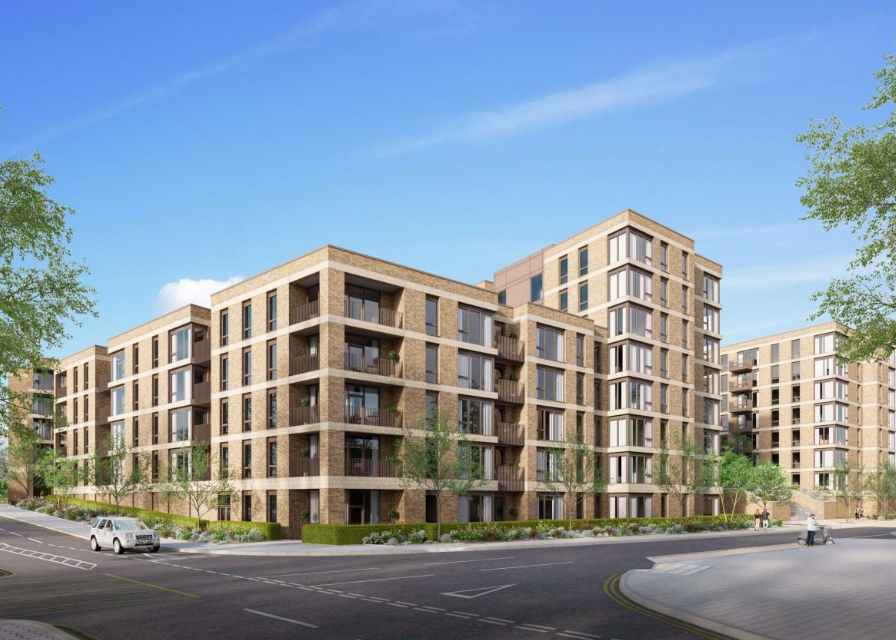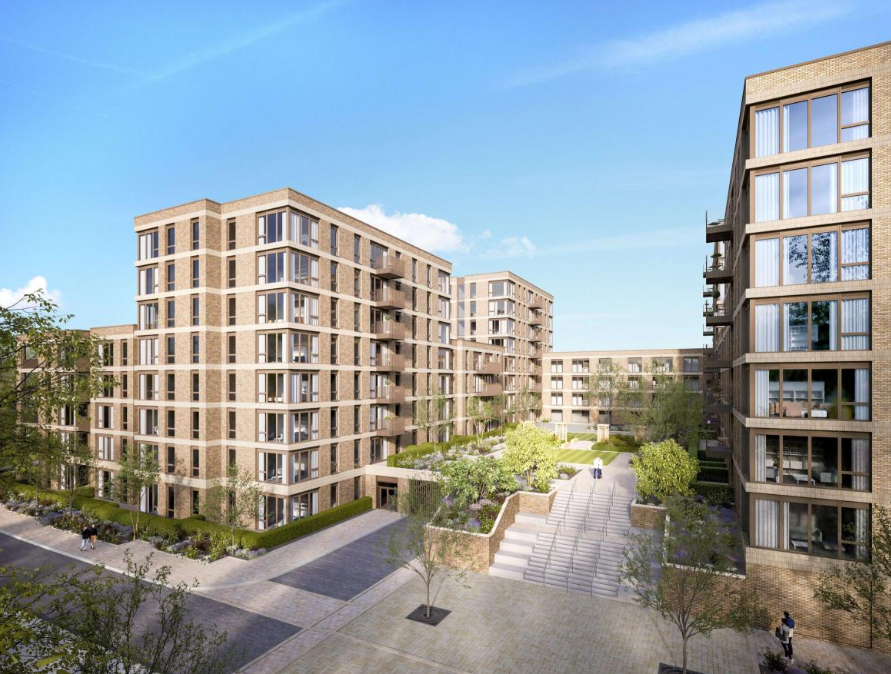It turns out, after all, that the climate emergency in Brighton and Hove, according to the Greens, is hot air!
On Thursday 4 March, two of the three representatives of the Green Party on Brighton and Hove City Council’s Planning Committee voted in favour of the Moda development on the Sackville Trading Estate.
They did this despite saying they were “not happy with it” and despite calling the scheme “old fashioned”.
I was there when the committee met at Hove Town Hall and I spoke against the development. I was hoping (I was heartened by a fellow councillor saying “hope is possible” not that long ago) that my Green colleagues would vote with their gut and stick to their principles rather than be mindful of officer scaremongering about the need for housing in the city and need to tackle the shortfall in housing numbers built over the past five years.
If you believe in the climate emergency, then there are matters that outweigh the need for more housing.
We all saw how change was possible when Plan B Earth v Secretary of State for Transport in the Court of Appeal recently delivered a partially successful challenge to Heathrow expansion.
The court ruled that the government should have taken the Paris Agreement on Climate Change into account when designating the Airport National Policy Statement.
Maybe colleagues here should contemplate that for a while.
There’s been other good news. The Chancery Lane project recently published a climate contract playbook and sets of model laws and the House of Lords issued a research briefing on the interrelationship of climate change and biodiversity, both of which are in the Brighton and Hove DNA.
We do not need to look to big cases. Small cases also demonstrate that the ground is shifting.
Planning Inspectorate appeal reference 3236423 proved that the impact on the landscape outweighed the provision of new housing (permission refused for a residential development at Langford).
On the other hand, appeal reference 3238171 showed that the need for new housing outweighed other considerations including the declaration of a climate change emergency (permission granted for a residential development at Minster).
For Hove and the Sackville Trading Estate, it could have gone either way then – a 50/50 chance. That’s why I strongly disagreed with Peter Kyle, the MP for Hove, when he said about the development, “Hove is not going to get better than this from a private site.”
Hove deserves better than this. And we will fight for better than this in Hove Park ward.
For me, my three minutes speaking to the committee against the development was intended to offer colleagues on the council confidence in the right decision.
In addition to the legal examples above, which officers should have cited for members, we have had, from the Conservative government, ministerial statements wanting to see zero-carbon homes built as standard.
What we have from colleagues in the city in return is what can only be described as a lack of confidence.
An independent councillor on the committee who voted in favour of the development did so after stating that traffic “will be dire”.
Another Green colleague cited the urban heat island effect in the development, jokingly adding that the wind tunnel effect might then cool residents. He voted in favour of the Moda application.
Credit has to be given to a Labour colleague who said that he would not want to be held over a barrel by the landowner while making his decision.
In my statement, I said that I was angry that Coal Pension Properties, the landowner, was playing hard ball, offering 10 per cent of units at discount market rates contingent upon the council not seeking any future viability reviews.
The District Valuer Service, not the best in the world (according to council committee papers), in what was probably the only good thing to come out of its report on the scheme, advised the council that consideration should be given to a review mechanism.
That was not what the landowner wanted to hear.
In spite of this, we had the MP for Hove – and one of the councillors for Westbourne (who by the way works for the MP) – singing the praises of the developer who was asking the city to accept 10 per cent affordable homes (well below policy levels) and even agree not to review the provision if market conditions improved.
During the committee meeting, there were questions from members about trees. No questions were raised though about the absence of accessible green roofs, green walls, sustainable drainage or protecting groundwater resources (all in emerging city policy).
This was after all the best Hove could hope for.
One last area of contention for me was the failure of some members to question why the council officers had not acted on their own emerging policy to play a proactive role in co-operating with other landowners to achieve comprehensive redevelopment in the area.
By this I mean improve permeability into the site by providing accessible pedestrian linkages to Sackville Road, and from the eastern end of the existing Coal Yard to Hove Station.
There’s an old tool called compulsory purchase orders which the city appears very reluctant to employ.
In the round, this was a very disappointing decision. And the debate was more disappointing. What made it so was that, in this year of climate action, and even with, as we are always reminded, a climate and biodiversity emergency, our Green colleagues voted in favour of a scheme that did not embed strong environmental principles, did not respond to the climate emergency and, even worse, only provided 10 per cent affordable housing.

What left an even more bitter taste was that the “best Hove can hope for”, according to Peter Kyle, would have been heard at a planning inquiry next month no matter what decision the Planning Committee took.
Colleagues were not brave enough and, in the process, killed off the city’s best opportunity to deliver a “net zero” development that would have greatly helped us meet our carbon neutrality commitments for 2030.
RIP the Climate Emergency in Brighton and Hove.
Samer Bagaeen is a professor of planning. He is also a Conservative councillor and represents Hove Park ward on Brighton and Hove City Council.











overall/on balance/ : is this “news” or “opinion”
What was needed was a system to match the streets to the west of Sackville Road: highly desirable, and a good way of housing many people, with gardens.
Until BHCC gets its act together to compulsory purchase areas like this, with build-funding to match need, and with appropriate non- profit land use to benefit residents, we are subject to the twin blackmails of developer agendas & Govt demands – encoded in the City Plan as compulsory housing target figures.
The cllr here is right & the Greens need to be careful of losing green credentials & credibility in favour of fringe issue focus & looking like a co-opted part if the Labour Party. Fact.
As always the public political agreements “to work together” come at the expense of closed door deals.
These deals often contrary to party rules and manifesto pledges become the ammunition of the next political cycle.
What happened to the referendum on the Neighbourhood Plan it could have progressed last year and bolted down much the representative desired for constituents.
Want the development stopped look here. What duties has BHCC failed citizens on? Failure to question only means Moda is a just a stick for another Party to wave around come election time.
What utter drivel this is.
So what do you suggest Cllr Bagaeen? There is an urgent need for more housing in the City and we are yet to see the Hyde Partnership which promised 1000 homes bare any real fruit.
I doubt if you were living in the City when the Conway street development but it provided hundreds of homes as did Albion Hill.
As for Climate Change China is doing as it likes and what is being done to bring them to order?
As for becoming Carbon neutral there is very little chance of that happening in the next 50 years.The effects that Coronavirus has had on the stock markets will have a huge impact on Companies being able to invest and Pension funds like the Coal Board will be counting the cost.
The ‘slum cearance’ which made way for the Ellen St industrial sheds and 10 storey blocks along Clarendon Rd demolished a huge school & some side streets, as well as more dwellings & business premises than the 334 flats created.
So how many homes do you think there were in Conway street and the North side of Clarendon rd.My Grandmother lived in Conway st as did an Uncle and Aunt and another in Ethel street.
There appears to be lots of people who think an Estate with Houses only the really rich could afford should be built there.
The Clarendon & Ellen blocks replaced housing & commercial from Conway Place, the south side of Ellen Street plus north side of Clarendon Rd plus side street areas – not just the north side of Clarendon Rd
Tory councillor doesn’t care about adequate housing. Hardly news.
The landowner – the Coal Pension Fund – did indeed ‘play hardball’ by selling the site to the highest bidder. MODA agreed to pay a very high price, subject to securing planning approval for a scheme which would cover the development costs of buying the land, construction and a significant profit. The level of rents reflects the anticipated market rents in Hove which MODA judged would be sufficient to make the scheme commercially viable by covering the long term management costs of the scheme. In this system of providing housing on privately owned land ‘affordable housing’ is ‘tail-end Charlie’ and in this particular case entirely within the gift of the Coal Pension Fund.
But the Coal Board Fund, MODA and the Council all played by the rules of the game. These rules are set by the government which since 2010 has changed them in fundamental ways in favour of private sector development interests. This has weakened the planning system’s capacity to secure a fair share for the public of the increase in land value that flows from the Council granting planning permission for uses which have a higher value than the existing uses. In this case, changing a run-down industrial estate into a modern mixed-use development, providing badly needed housing and local jobs. It was in this context that the Hove Station Neighbourhood Forum reluctantly supported the scheme in a written submission which attempted to explain why the government’s rules meant that the MODA scheme was the best deal Hove is likely to get – see http://www.hovestationforum.co.uk.
In the long term, these rules need re-writing to re-balance public benefit and private profit. Councils should once again be enabled to compulsorily purchase land at, or near, existing use value and redevelop it in partnership with the construction industry to deliver genuinely affordable council housing as part of mixed-use schemes which also provide local jobs and reduce development pressure on greenfield sites, In the short term, the Planning Committee should require planning officers to publish a clear statement on the Council website which explains why they had no choice but to accept this scheme. This could also set out the changes that the council would like to see in the rules of the game, to enable a major expansion of its current programme of providing new, affordable social rent housing
Someone is in the wrong party… how were they selected?
Or is pretending to believe in a ‘climate emergency’ (PMSL) a requirement to participate in local councils now?
Land owner sells land to make money. Developer builds housing to make money. That’s business. What’s climate change got to do with it. Affordable housing doesn’t make money. I dare say a lot of people can’t even afford the “affordable” housing. I don’t think any new development in Brighton and Hove is going to affect the councils zero emissions aspirations. If the council thought it would they would hardly approve any new building project, but then what would happen to the so call housing shortage that we are told exists. You can’t have your cake and eat it.